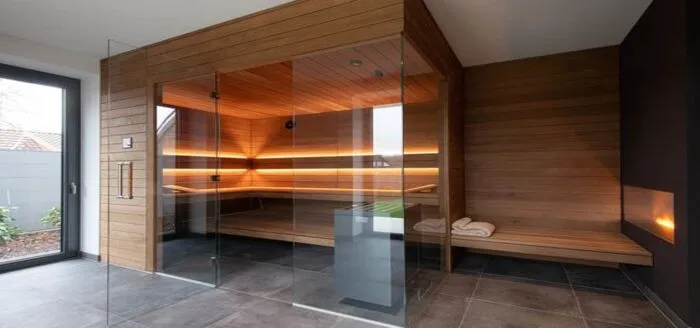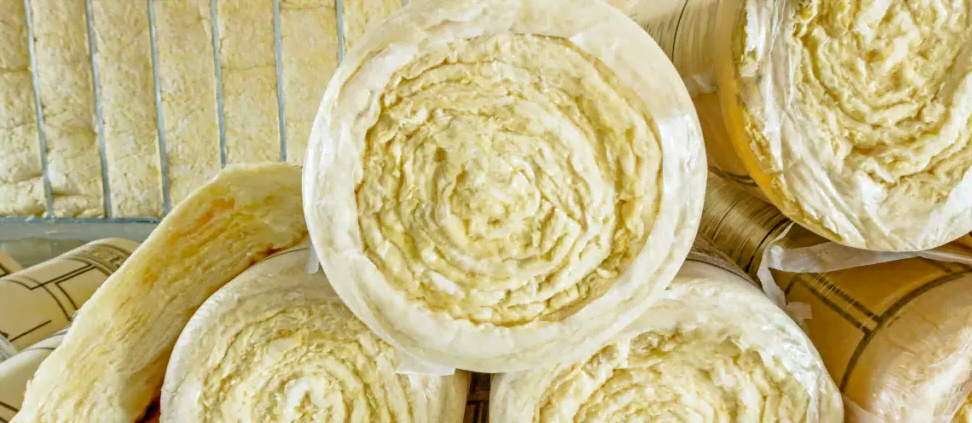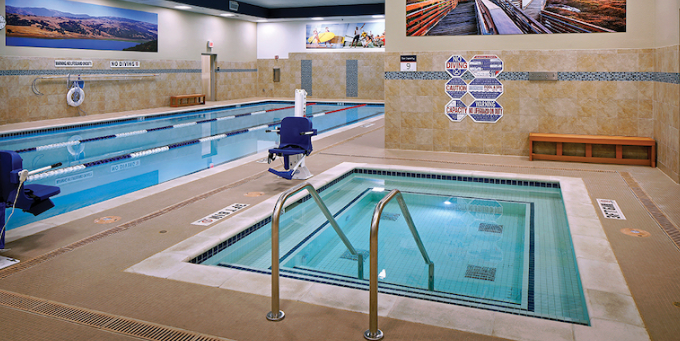Insulation is required for outdoor saunas to retain heat and increase energy efficiency, and user comfort. When preparing to establish an outdoor sauna, research is essential to specify
drainage, power, and additional insulation demands.
For best results and to avoid heat loss, most outdoor sauna buildings require
extra insulation, even though some models may include wood that reflects heat. The sole exception is a
barrel sauna, which is made to hold heat more effectively without further insulation.
Do Outdoor Saunas Need
Insulation?
Insulation is indeed vital for outdoor saunas. Reaching the high temperatures necessary for a successful
bathhouse experience while improving the energy economy depends heavily on insulation. When a hot tub is
properly insulated, less continuous heating is required, which lowers energy expenses. It also keeps heat from
escaping, maintaining a constant and cozy temperature within the hot tub even in the winter months.
The Science Behind Outdoor
Sauna Insulation

Heat naturally moves from areas with higher temperatures to those with lower
temperatures. Heat can escape to colder areas from low outdoor saunas if it is not stopped. This is
performed through insulation, which stops heat loss. Condensation may form on cabin walls when warm air
comes into contact with their colder surface, which might harm the cabin’s wood.
Outside temperatures are usually lower than those inside saunas, even in warm
areas. Soundproofing is therefore necessary to prevent heat flow, reduce condensation, and maximize heat
escape while maintaining thermal temperatures of at least 150 degrees F.
What is insulation?
A chemical or material called insulation is used to prevent or delay the flow of
sound, electricity, or heat. Insulation is used in baths to minimize heat loss, maintain target
temperatures, and avoid condensation, all of which increase user satisfaction and save electricity.
Benefits of Using Sauna Insulation
The benefits of using sauna insulation are given below:
- Heat Retention: By keeping the sauna’s inside heated for an extended
period, insulation helps maintain its temperature. - Energy Efficiency: Insulation can improve the sauna’s energy
efficiency and perhaps reduce heating expenses by minimizing heat loss. - Comfort: By preserving constant temperatures and lowering the
possibility of cold patches, soundproofing makes spa sessions more enjoyable. - Water Resistance: Condensation on the spa walls may be avoided with
enough insulation, shielding the wood from moisture-related damage.
Risks of Using Sauna
Insulation
The risks of using sauna insulation are given below:
- Heat Retention: By keeping the sauna’s inside heated for an extended
period, insulation helps maintain its temperature. - Installation Errors: Ineffective insulation installation might result
in errors or even damage to the steam room. It can also fail to retain heat effectively. - Cost rise: The long-term savings in energy may balance these costs,
adding soundproofing to a spa might result in an initial cost rise during construction. - Fire Hazard: There may be a chance of a fire if the insulation is not
heat-resistant or is put too close to thermal components. - Diminished Air Quality: Insufficient ventilation and shielding can
result in improper air circulation in the steam room, which could have an impact on user comfort and air
quality.
Whether to install insulation in a spa is a decision that has to be made after
giving these things a lot of thought and consulting an expert.
How to insulate an outdoor
sauna?

Do I need to insulate an outdoor sauna?The first step in properly insulating an outdoor sauna is to choose high-quality insulation materials that can
withstand high temperatures and moisture, like fiberglass or mineral wool. To stop heat loss, install the
insulation snugly between the wooden framing of the sauna’s walls, ceiling, and floor. Refract heat out into the
bathhouse and avoid moisture buildup by adding an interior vapor barrier, such as aluminum foil.
Lastly, to create a long-lasting and visually beautiful interior finish, install tongue-and-groove wood or other
appropriate wood on the insulated walls. A steady temperature can be maintained, energy efficiency can be
increased, and the spa experience can be improved with proper insulation.
Is insulation required for an
outdoor sauna?
For an outdoor sauna, floor insulation is not always necessary, although it is
strongly advised for best results and energy economy. The steam room can achieve and sustain the ideal
temperature more successfully thanks to soundproofing, which helps to keep heat inside the device.
Heat loss can happen quickly, which might lead to less enjoyable spa sessions and
increased energy use without insulating material. The need for
shielding may differ based on elements including temperature, spa design, and individual preferences.
Certain cabin designs, such as barrel saunas, are made to better retain heat
since they may not need as much protection.
Whether or not to insulate an outdoor sauna finally comes down to one’s
preferences and a variety of considerations. Certain types of saunas, such as thermally modified saunas and
barrel saunas, are designed to be used outside and do not require shielding to function well. Each type of
spa is described in more depth below.
Barrel Saunas
Barrel saunas efficiently generate and hold heat without the need for insulation
with the help of a few design elements.
- Shape: The circular form enables constant circulation, allowing warm
air to rise and cool air to descend, effectively regulating inside temperatures. The rounded roof also
keeps rain and snow from building up, which keeps the roof from being too cold. - Space: Barrel spas have around 23% less inside space to heat than
roof or cabin-style saunas but have comparable external sizes. This helps to improve heat
retention. - Hardwood Staves: Unlike cabin-style saunas, the cylindrical walls’
long timber planks improve heat retention by acting as some natural insulation because of their close
shape.
Thermally Modified Wood Barrel
Saunas
Some forms of wood, especially those that have been thermally modified, such as
Thermory and Forever Saunas, are quite good at holding heat. By heating the wood to temperatures over around
356°F (or 180°C), thermal modification removes moisture and modifies the chemical makeup of the wood. Spas
gain a great deal from this process:
- Increased strength and lifespan.
- Reduced absorption capability of the wood for increased stability.
- Enhanced defenses against germs and bugs.
- Increased thermal efficiency.
Cabin Saunas
Cabin saunas are usually square or rectangular in design, and to get the best
airflow patterns for convection, vents or fans may be necessary. Cabin saunas require soundproofing for
optimal outcomes because they are not made to retain heat, whatever the materials used in construction. Shed
saunas have flat roofs that can let in snow and rain during the winter, and their staves are not as tightly
attached as those of spherical baths.
Pod Saunas
Pod saunas, so-called because of their raindrop-shaped design, have a circular
top and a flat bottom. Because the architecture of a pod cabin is not as efficient as that of a barrel spa,
insulation is vital.
Pod saunas have spherical roofs that help with rain and snow drainage, they lack
the benefits of a completely circular form, which makes traditional heating less effective. Barricail baths
and pod baths are comparable in other ways. They also include internal areas that resemble spas in
cabins.
Luna Saunas
Luna saunas are square or rectangular shapes with rounded edges for a visually
pleasing design. Similar to cabin spas, they also need insulation to help with heat retention and to stop
humidity.
Materials Used for an Outdoor
Sauna
The materials used for an outside sauna are given below:
- Wood: When constructing the room, choose a sturdy, heat-resistant
wood like redwood, hemlock, or cedar. - Insulation: If your steam room is cabin- or pod-style, you may want
to add shielding to increase heat retention and energy efficiency. - Door: To stop heat loss, install a secure, well-insulated
door. - Heater: Pick an outdoor-rated spa heater, such as an infrared,
electric, or wood-fired model. - Ventilation: Make sure there is enough ventilation to keep the air
clean and stop moisture from building up. - Flooring: Choose materials that can resist heat, such as tile,
concrete, or wood that has been heat-treated. - Benches: Build the sauna’s benches out of the same wood that resists
heat, which should be used for the inside walls as well. - Roofing: To shield the steam room from the weather, use a covering
that’s resistant to the elements. - Lighting: Choose fixtures made to withstand extreme humidity and
temperature levels, such as sauna-safe lighting. - Final Touches: For a full thermal experience, add extras like
thermometers, buckets, spoons, and fragrant oils.
Types of Sauna insulation

Hardware stores have several forms of insulation, but not all of them are
suitable for use in outdoor sauna roof insulation. If you are not sure whether the barrier is best for your
little outdoor spa, examine the benefits and risks listed below to help you decide:
Paper-Backed Fiberglass Rolls
Perhaps you are familiar with the puffed-up pink fiberglass insulator, which is
reasonably priced and has an R-value of 2.9–3.8 per inch. Still, fiberglass insulation has disadvantages.
- It needs to be handled carefully, and protection should be used since it
might emit glass breaks that could hurt your skin and lungs. - The paper backing has the potential to retain moisture, which is harmful to
infrared protection. If fiberglass is your material of choice, get one without a paper covering and take
the necessary safety measures.
Insulating boards
Compared to alternative materials like cotton or fiberglass, insulation boards
offer higher R-values and are simpler to install. They are usually composed of polystyrene extruded foam,
polystyrene foam, or polyisocyanurate. Expanded polystyrene foam should not be used since it tends to hold
moisture. The R-values of boards, which range from 7.0 to 8.0 per inch, are very impressive.
Recycled Cotton
Recycled cotton insulation is more expensive than fiberglass but has benefits. It
is made from recovered fabrics like jeans, which accounts for its blue color. It is not as likely to cause
skin discomfort from glass fragments or problems with the paper backing as fiberglass is. Its improved
thermal performance makes the extra expense fair. Its R-value is 3.0-3.7 per inch, a bit higher than that of
fiberglass.
Vapor Barriers
Because of the extreme temperatures and humidity levels, standard plastic barrier
panels used in homes are not appropriate for outdoor spas. Use of a vapor barrier made especially for spa
usage, such as aluminum foil. To keep moisture from getting to the insulation and wall screws, this barrier
reflects heat into the bathhouse. To maximize its efficiency, the liquid barrier over the insulator must be
applied perfectly.
What Does the Sauna Insulation
R-value Mean?

Once you have admitted that soundproofing is necessary, you need to understand
the idea of R-value to choose the best kind. The R-value, which indicates how well a material blocks heat
transport, is a measure of thermal resistance. Higher R-values are indicative of better insulation
performance.
Ideal R-values for ceiling and wall coverings in outdoor spas are often in the
range of R26 and R19. These numbers efficiently hold onto heated air, avoiding the formation of moisture on
the bathhouse walls, which can damage the wood. There are many different kinds of soundproofing, and only a
few of them could work for your tiny outdoor cabin.
Can constructed outdoor
saunas be insulated already?
Many manufacturers highlight the “heat-insulating properties” of wood, such as
cedar, but they frequently do not offer any further insulation on top of the wood. Some wood varieties may
be better at retaining heat than others, shielding is still advised to increase efficiency and protect the
wood from any condensation damage. It is a good idea to check with your manufacturer to find out if
shielding is included. If not, you will need to buy soundproofing for your bathhouse separately.
Tips for Insulating a Sauna
Tips for insulating a sauna are given below:
- Select insulation that is appropriate for use in steam rooms, such as used
cotton, fiberglass rolls, or insulator boards. - Put safety first when working with soundproofing, especially if fiberglass
is being handled. Wear protective clothing to prevent skin irritation. - To avoid moisture retention, which might reduce the efficiency of the steam
room, think about using insulators without paper covering. - To keep moisture out of the walls and to improve heat retention, cover the
insulated area with a vapor barrier, ideally made of aluminum foil. - Make sure all windows, doors, and other openings are properly sealed and
insulated to reduce heat loss. - Pay close attention to details and completely cover all surfaces walls,
ceilings, and floors to get the best possible energy utilization and heat retention. - If you are not sure how to keep a well-insulated hot tub, ask for expert
advice or help with insulation materials or methods.
FAQs
The most frequently asked questions are given below:
Do traditional saunas have
insulation?
With R-13 typical insulation, a normal spa might lose up to 4000 Btus (or 1200
watts) every hour. However, since a hot tub burner typically produces 25–40,000 BTUs of heat each hour, 4000
BTU loss is not a significant issue.
Should the sauna floor be
insulated?
You don’t need to cover your cabin floor since heat rises and bathers sit on
benches. Due to the cold floor, there is relatively minimal heat loss. The purpose of the spa heaters is to
heat chilly air.
How do you ventilate a sauna?
To ensure proper air circulation in the steam room, it is ideal to have an upper
(exit) vent and a lower (intake) vent. The upper vent expels used air, while the bottom vent pulls in fresh
air for a pleasant environment.







